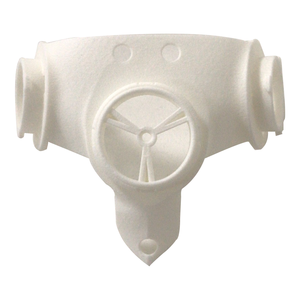**The Wild World of 3D Printing: What Can You Actually Make?**
(What Materials Can Be 3d Printed)
Imagine a machine that can create anything you dream up. A tiny toy, a custom phone case, even parts for a rocket. This isn’t science fiction. It’s 3D printing. But here’s the catch: what you make depends on what you print with. Let’s dive into the weird, wonderful materials that make this tech so exciting.
Start with the basics. Plastics are the go-to for most 3D printers. PLA is the friendly option. It’s made from cornstarch or sugarcane, smells like candy when melted, and comes in rainbow colors. Need something tougher? ABS steps in. It’s the same stuff used in LEGO bricks. But fair warning: printing ABS smells like burnt plastic. Open a window.
Resins are next. These liquid materials turn solid under UV light. The results? Smooth, detailed prints perfect for miniatures or jewelry. Dental offices even use special resins for crowns and braces. Just don’t drink the resin—it’s toxic before it’s cured.
Metals sound heavy, but 3D printers handle them too. Titanium, stainless steel, even gold and silver can be printed. Aerospace companies love this. They make lightweight airplane parts that still handle extreme heat. Jewelers print intricate designs impossible with traditional tools. Downside? Metal printers cost more than your car.
Flexible materials are where things get fun. TPU bends like rubber. Print squishy phone cases, bouncy shoe soles, or grippy handlebar covers. Ever seen a 3D-printed octopus toy with wiggly tentacles? Thank TPU.
Wood isn’t just for carving anymore. Mix sawdust with PLA and you get wood filament. Sand and stain it like real timber. Print a rustic picture frame or a clock that looks hand-carved. It even smells faintly like sawdust while printing.
Ceramics might surprise you. Special printers squirt out clay-like paste. Fire the finished piece in a kiln, and you’ve got a mug, vase, or sculpture. Artists use this to create complex shapes traditional pottery can’t touch.
Carbon fiber is the superhero of materials. Mix it with plastics, and you get parts stronger than steel but lighter than aluminum. Race car teams print dashboards. Drone builders make unbreakable arms. Just don’t expect it to be cheap.
Food printing sounds like a gimmick—until you try it. Chocolate printers layer melted cocoa into fancy shapes. Bakeries use sugar paste to build edible wedding toppers. Scientists experiment with printing meat using lab-grown cells. Yes, that’s a thing.
Bioprinting goes further. Living cells are mixed into “bio-inks” to create tissues. Researchers print skin grafts for burn victims. Someday, entire organs might be printed for transplants. It’s early days, but the future looks wild.
Not every material is easy. Some need high heat, lasers, or toxic chemicals. Printers for advanced materials often cost thousands. But as tech improves, prices drop. Hobbyists now print with metals once limited to factories.
What’s next? Maybe printers in your home using dirt or recycled trash. Scientists already experiment with turning old plastic bottles into filament. The goal? Make 3D printing as common as paper printers.
(What Materials Can Be 3d Printed)
One thing’s clear: 3D printing isn’t just about plastic doodads. It’s a material revolution. From chocolate to titanium, the options keep growing. Whatever you imagine, there’s likely a way to print it. The real question is—what will you create first?
Inquiry us
if you want to want to know more, please feel free to contact us. (nanotrun@yahoo.com)

